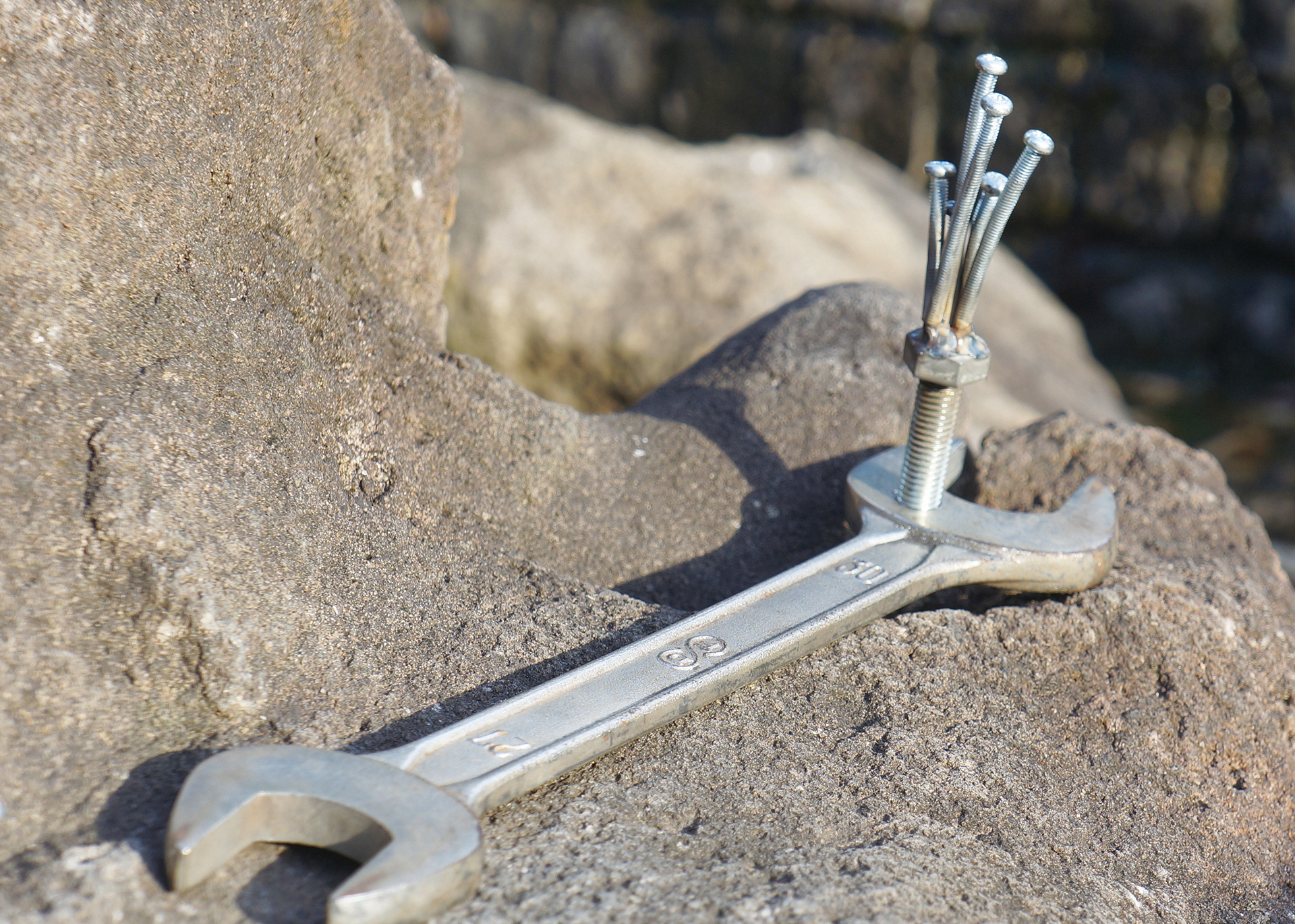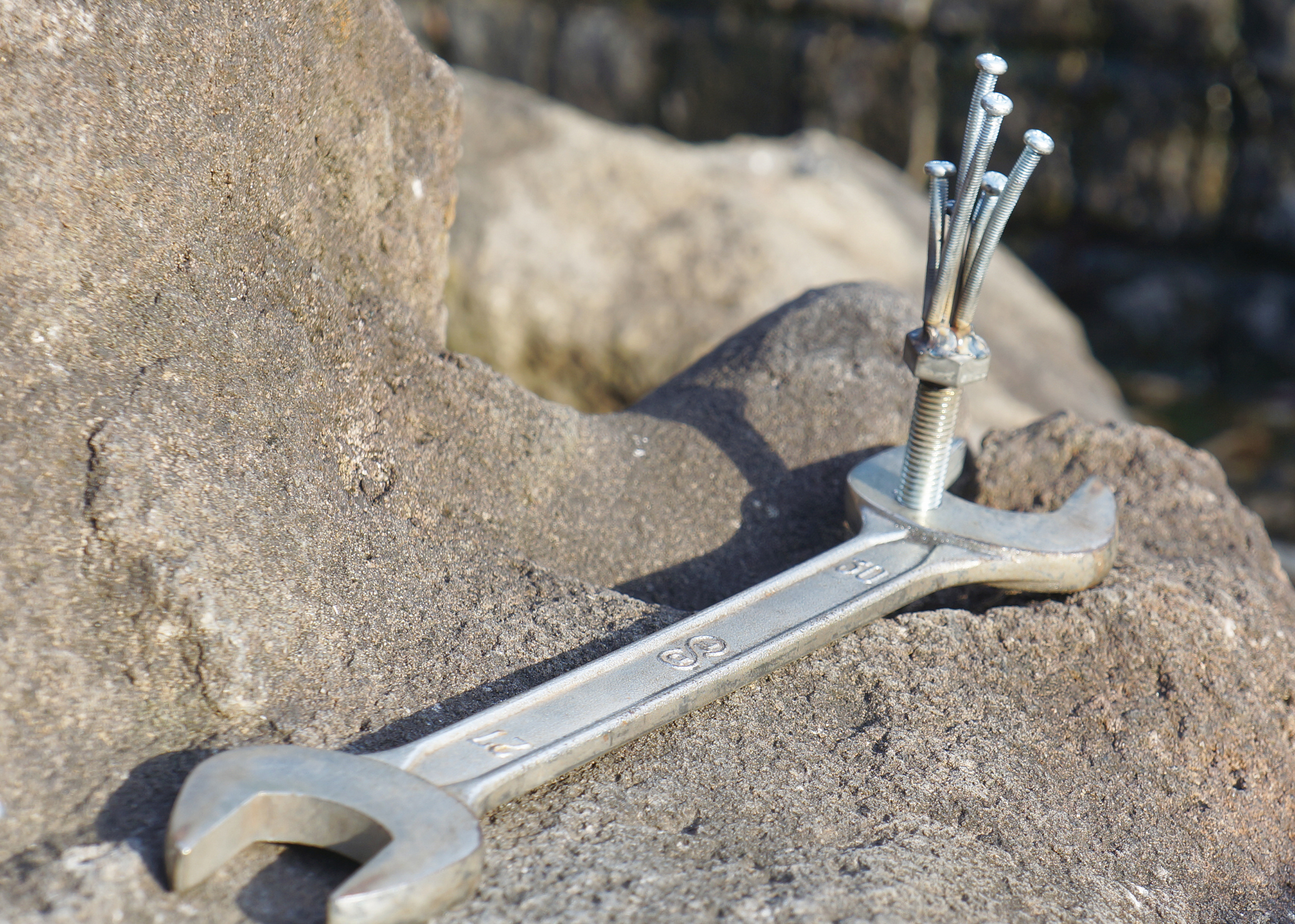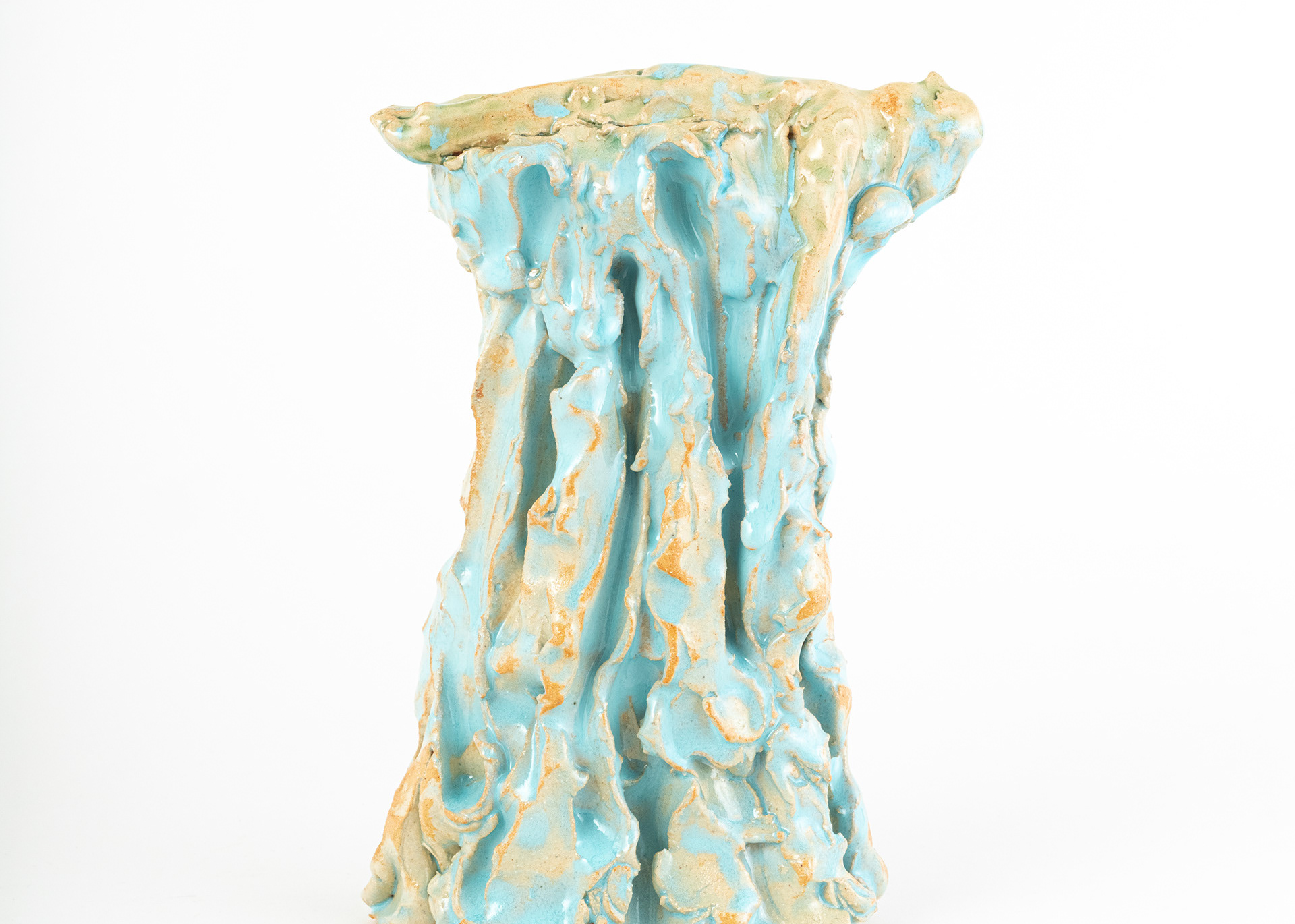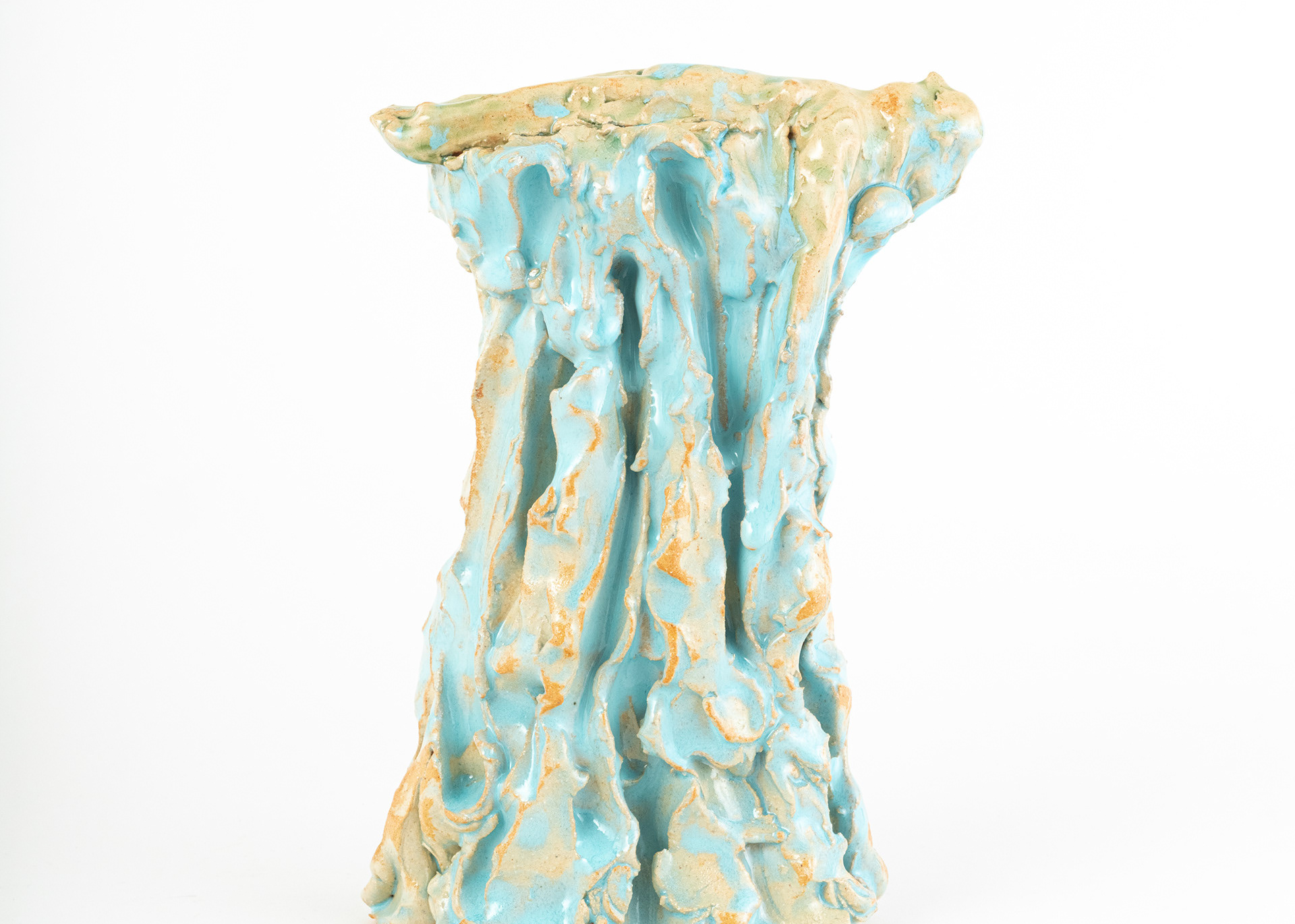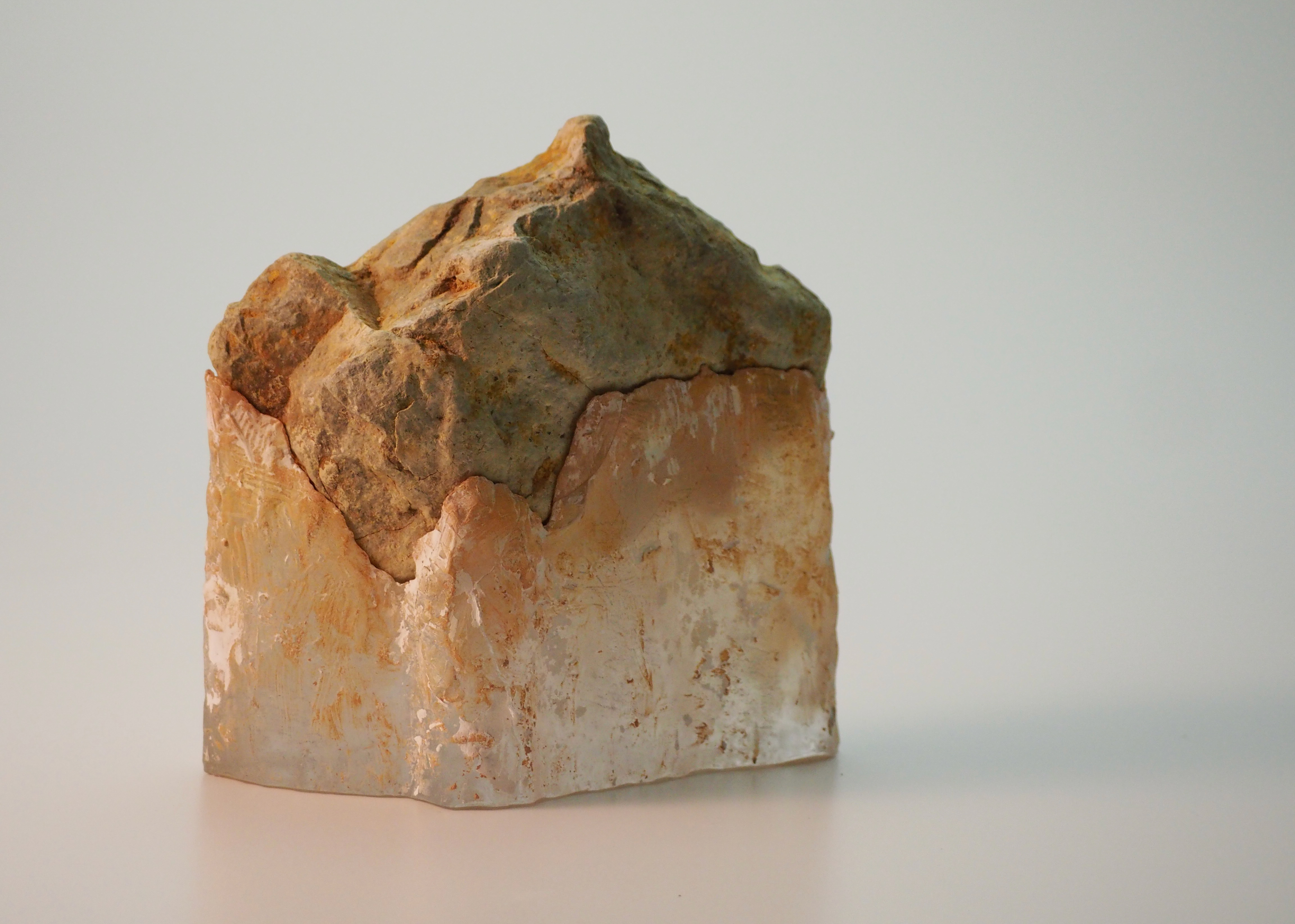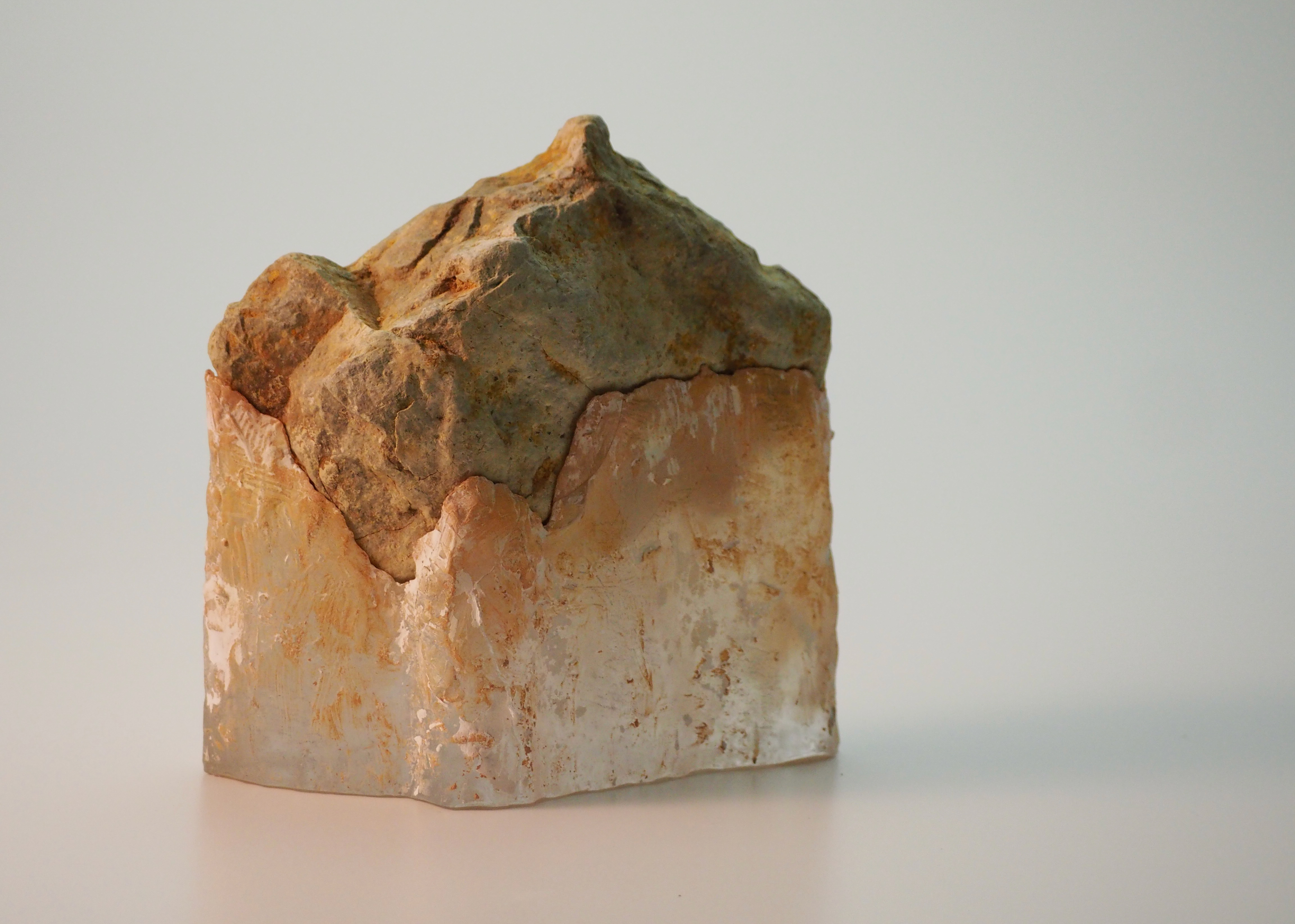Twilight Entrance Window Gallery Project vol.3
お客の来ない住宅展示場大好評分譲中 -No Visiter, Huge Praise-The Model Home Park-
三浦 彩 Aya Miura
2025.8.9 (sat) - 10.19 (sun)
彫刻家であり農家でもある三浦彩は、都市と地方、複数の営みを往来しながら、「彫刻とは何か」を静かに問い続けている。彫刻とは、物質をかたちづくるだけでなく、目に見えない気配や感情、日々の所作や関係性まで含む行為だと捉えている。
本展では、「どじょう」「鳥」「かえる」など小さな生き物のための“住宅展示場”を構築する。並んだ小さな家々は、農作業の傍らで出会った風景や感触に導かれて立ち上がった彫刻であり、人間はその外縁から静かに眺める立場に置かれる。ふと、自らが「見られる存在」であることにも気づかされるだろう。
土を耕し、種をまき、育て、見守る日々のなかに、彫刻的な感覚や時間の流れが自然と織り込まれている。そうした営みの延長線上にある構造物は、私たちと小さな生き物との距離や関係性をそっと浮かび上がらせる。
そもそも、まちにとって「家」とは何だろうか。所有される建築ではなく、そのときその場所に仮に現れる居場所。どじょうや鳥、かえるたちのように、家は誰のものでもなく、ただそこに在る。
「お客の来ない住宅展示場 大好評分譲中」という矛盾に満ちたタイトルには、展示と住まい、見ることと見られることの境界を揺るがす問いが込められている。日常の足元にそっと光を当てながら、私たちが見逃してきた営みや気配に触れる、彫刻という静かな試みである。
本展では、「どじょう」「鳥」「かえる」など小さな生き物のための“住宅展示場”を構築する。並んだ小さな家々は、農作業の傍らで出会った風景や感触に導かれて立ち上がった彫刻であり、人間はその外縁から静かに眺める立場に置かれる。ふと、自らが「見られる存在」であることにも気づかされるだろう。
土を耕し、種をまき、育て、見守る日々のなかに、彫刻的な感覚や時間の流れが自然と織り込まれている。そうした営みの延長線上にある構造物は、私たちと小さな生き物との距離や関係性をそっと浮かび上がらせる。
そもそも、まちにとって「家」とは何だろうか。所有される建築ではなく、そのときその場所に仮に現れる居場所。どじょうや鳥、かえるたちのように、家は誰のものでもなく、ただそこに在る。
「お客の来ない住宅展示場 大好評分譲中」という矛盾に満ちたタイトルには、展示と住まい、見ることと見られることの境界を揺るがす問いが込められている。日常の足元にそっと光を当てながら、私たちが見逃してきた営みや気配に触れる、彫刻という静かな試みである。
彫刻家の家と山形県羽黒町分譲地にて同時開催 @itachi_koumuten
Concurrent Exhibition at the Sculptor’s House and at a Residential Development in Haguro, Yamagata
三浦彩の居住地、山形庄内地域の羽黒町の分譲地にて同時開催。生まれ故郷の余目町(現・庄内町)や、羽黒町、そして海沿いの砂地が広がる浜中(酒田市)など、庄内の異なる三つの地域を往来しながら営む農作業と制作の背景が、この会場にも息づいく。
Concurrent Exhibition at the Sculptor’s House and at a Residential Development in Haguro, Yamagata
三浦彩の居住地、山形庄内地域の羽黒町の分譲地にて同時開催。生まれ故郷の余目町(現・庄内町)や、羽黒町、そして海沿いの砂地が広がる浜中(酒田市)など、庄内の異なる三つの地域を往来しながら営む農作業と制作の背景が、この会場にも息づいく。
Aya Miura, a sculptor and farmer, quietly continues to question what sculpture can be, while moving back and forth between urban and rural life, between multiple forms of livelihood. For her, sculpture is not merely about shaping materials—it is a practice that embraces invisible presences, emotions, gestures, and the relationships woven into daily acts.
In this exhibition, she constructs a “housing expo” for small creatures such as loaches, birds, and frogs. The rows of tiny homes are sculptures born from encounters with textures and landscapes during farm work. Humans, meanwhile, are placed at the edge—invited only to observe. In doing so, they may come to realize that they, too, are being seen.
Within the act of tilling soil, sowing seeds, nurturing, and watching over life, Miura finds sculptural rhythms and temporalities. Structures born from these cycles gently reveal the distance and connection between ourselves and the smaller beings that share our world. What, then, is a “house” to a town? Perhaps it is not a space defined by ownership, but a fleeting place that simply exists at a moment in time—just like the homes of loaches, birds, and frogs. No one’s possession, but quietly there.
The paradoxical title of the exhibition, “No Visiter, Huge Praise-The Model Home Park”, unsettles the boundary between exhibition and dwelling, between observer and observed. This quiet sculptural attempt shines a gentle light on the unnoticed presences and rhythms that lie at our feet, inviting us to reconsider how we look—and what we might have failed to see.
Simultaneously held at a residential development in Haguro Town, located in the Shōnai region of Yamagata Prefecture, where Miura Aya resides. The background of her farming and creative work—rooted in her journeys between three distinct areas of Shōnai: her birthplace of Amarume (now Shōnai Town), Haguro, and Hamanaka in Sakata City, a coastal area with sandy soil—is reflected in this venue.
息をのんで決意し、石を拾って家に持ち帰った幼い日のことを、いまも時折思い出す。あれから、25年が経った。
私は東北の田舎で育った。小さい頃、「石を拾ってはいけない」と教えられていた。なぜなのかを尋ねても、「そういうものだから」と言われるばかりで、はっきりとした理由はわからなかった。神様が宿っているから、神社の石を持ち帰ると熱が出るから――そんな話がまことしやかに私の町では語れていた。
それでも私は、ある日ひとつの石を拾い家に持ち帰った。部屋でその石を手に取り「これは私のものだ」と思った。
それからそんなひとかけらの出来事が、己の心に渦巻く欲との対話を生むことになる。そして私は今も同じような対話を繰り返している。
最近私たちの住んでいる地球は…ぜんたい気候というものが変わってきているようだ。
日本も例外ではない。各地で大雨による川の氾濫が毎年のように起きている。被災地の報道を見た際、あるおじいさんが「こんな氾濫、70年生きてきて初めてだ」と言っていた。その言葉に、私はふと気づかされた。
“生まれて初めて”という表現が持つ強い力。そして、私たちが自身の身体を通して強く訴えうる時間のスケールは、せいぜい70年、80年程度なのだと。
少し記憶をさかのぼる。都下にある大学院を出てから、遺跡発掘の職に就いた折に、武蔵野台地の北端に位置する飛鳥山で縄文時代の住居跡を調査していた。調査員が乾燥したオレンジ色の土を見つめながらがら言った。
「この住居、200年後くらいに改変されて、もう一回住んでるね」私は移植ベラで薄く地表を削りながら「やっぱり…」と思った。
“これは私のものだ”という感覚。
その感覚を有する言葉に対応する時間の幅は、実はとても限られているのかもしれない。考えていたよりも、ずっと短い時間だ。
ややもすると、言葉にして手に取った、その一瞬だけのことなのかもしれない。
なにかを「自分のものにする」だなんて、本当にできることなのだろうか?
私はそんなことを考えながら、指示された通り色の違う土を少しずつ削り取っていった。
私は彫刻家であり、農家でもある。
場所を往来し、立場を行き来しながら、日々なにかをつくる。
まずはよく見て、つけたりとったり、近くで見たり遠くで見たり、何度も確かめながら顧みて塑像している。
アトリエの中で起きていたことをそのまま広げて考えてみたのだ。
モデルと粘土の間だけでなく、ヒトや町や場所や集団、空間の中を、迷いながら選択し決断を重ねる。
宮沢賢治の言う灰色の労働を燃やしながら、営みの中で今作るべき彫刻を作れないかという挑戦をただ続けている。
三浦 彩
どじょう二世帯住宅(中古物件)
題名 どじょう二世帯住宅-RICE FIELD-
素材 陶器
I sometimes recall the day, long ago, when I held my breath, made up my mind, and carried home a stone I had picked up. Twenty-five years have passed since then.
I grew up in rural Tōhoku. As a child, I was told, “You mustn’t take stones.” When I asked why, the only answer I ever got was, “That’s just how it is.” In my town, people whispered such things as: gods dwell in them, or if you take a stone from a shrine you will come down with a fever.
Even so, one day I picked up a stone and brought it home. Holding it in my hands in my room, I thought, “This is mine.”
That small fragment of an act became the beginning of a dialogue with the desire that swirled inside me. And even now, I find myself having the same kind of conversation.
Lately, it seems the climate of our planet has been changing as a whole.
Japan is no exception. Every year, heavy rains cause rivers to overflow in various regions. Watching news coverage of one such disaster, I heard an elderly man say, “In my seventy years of life, I’ve never seen flooding like this.” His words made me realize something.
The phrase “for the first time in my life” carries a remarkable weight. And the span of time we can powerfully convey through our own bodies is, at most, seventy or eighty years.
Let me go back further in memory. After completing graduate school in western Tokyo, I took a job excavating archaeological sites. At Asukayama, located at the northern edge of the Musashino Plateau, we were investigating the remains of a Jōmon-period dwelling. A fellow surveyor, gazing at the dry orange soil, said,
“This house was remodeled about two hundred years later and lived in again.” As I skimmed away the earth’s surface with my transplanting trowel, I thought, “I knew it.”
The feeling of this is mine.
The span of time that corresponds to that feeling may, in fact, be far more limited than we think. Perhaps it lasts only for that fleeting moment when we put it into words and hold it in our hands.
Is it really possible to make something truly “our own”?
Such thoughts crossed my mind as I followed instructions to shave away the layers of differently colored soil.
I am a sculptor, and I am also a farmer.
I move between places and between roles, making things day by day.
I begin by observing closely—adding, removing, viewing from near and far, checking again and again, reflecting, shaping.
I began to think more broadly about what was happening in my studio.
Not only between model and clay, but also among people, towns, places, communities, and within spaces, I wander, choosing, deciding, over and over.
Like Kenji Miyazawa’s “gray labor,” I burn through the work, continuing simply to challenge myself to create the sculpture that ought to be made now, within the flow of daily life.
Aya Miura
Dojo Loach Two-Family House – Previously Loved
Title: Dojo Loach Two-Family House – RICE FIELD
Material: Ceramic
Material: Ceramic
